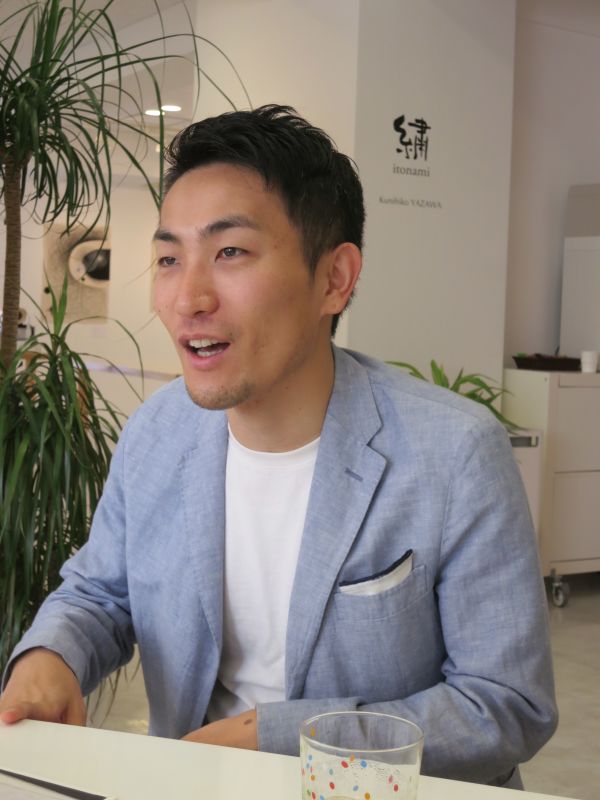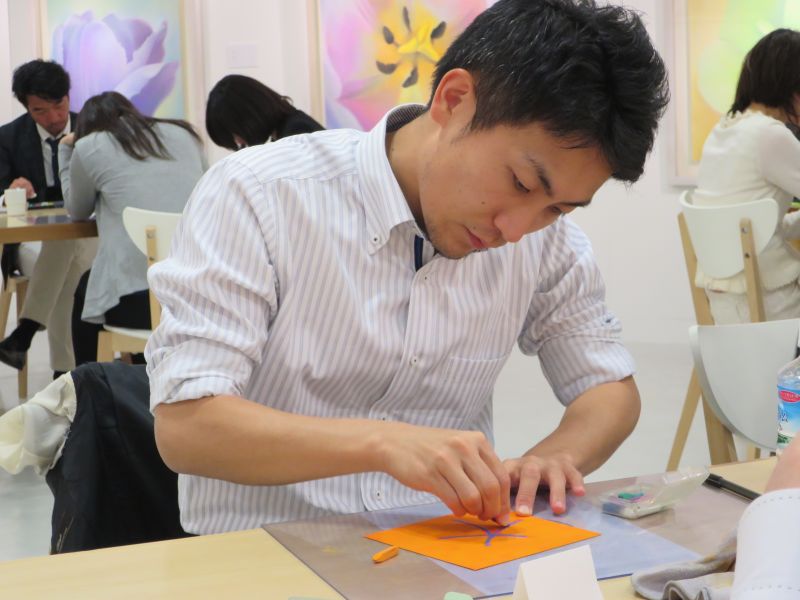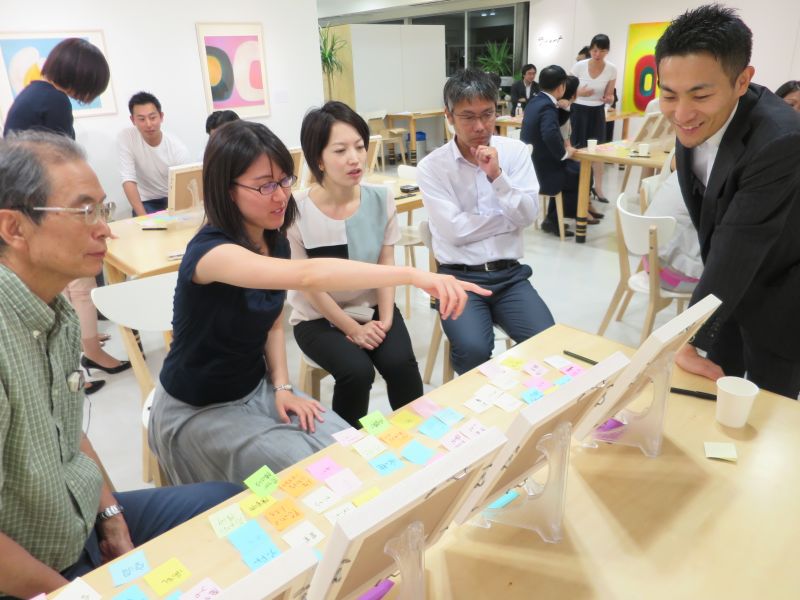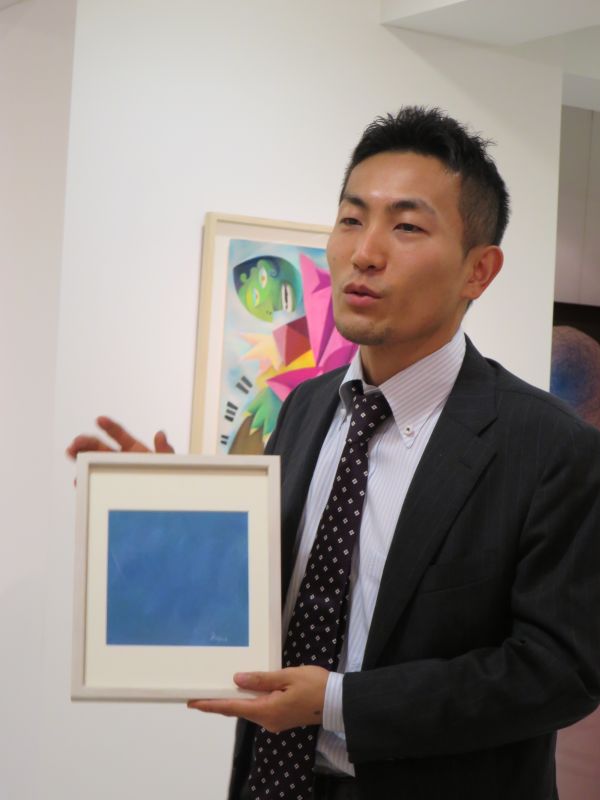I was curious what would happen if I made drawing a regular practice

I first experienced EGAKU in May 2011 at a session held at the University of Tokyo. It was just after the Tohoku Earthquake and I wanted to spend some time for introspection. After that I took part in a few EGAKU sessions when the mood took me, and then 6 months later I finally started the TOTSUKITOKA course in 2012 at the New Year's EGAKU session.
There were a few reasons I decided to do TOTSUKITOKA. I loved drawing pictures when I was in elementary school, also a few people I knew were already enrolled in the course. I was also curious to see what would happen if I made it a regular practice.
When I started the course, work was crazy busy. Work was my life, and even though there was a part of me that was frustrated about working weekends I felt I had no choice. I had to continuously deliver on the projects I was working on, always meeting tight deadlines. Given the situation perhaps I was also looking for place to get away from it all.
At the beginning, it was really about wanting to be understood
Looking back I realize that it took me a while to complete the 10 sessions. A lot of things changed during the time, and at different stages my drawing style changed. In the early sessions, I think I wanted to be understood by other people and so I drew pictures that I thought I could 'explain' to people. I'd keep adding colors, adding layer upon layer. I didn't want to have any empty space so I made every effort to fill in the entire canvas. In the process, the picture would be completely transformed from what I started out with. I was restless: I'd turn the picture around, perhaps draw a face on top of whatever was taking shape, add some more details and more layers of color. For a while I think that's pretty much sums up how I was drawing the pictures.
I noticed halfway through the course that this urge to 'explain myself' had gone. When I started TOTSUKITOKA, I felt there were so many things in my life at that time that I wanted to do, I felt overwhelmed. But at some point during the course, I realized that deciding what not to do was liberating - doing that felt much better.
In August 2014 I was transferred to the corporate sales division at work, and at that time I started using brighter colors in my pictures. My background's in sales, so I think the new role focussing on growing the new client base made me feel much more positive about myself. It was a role that played into my strengths so it was around this time that I could feel my confidence returning. I felt I had room to breathe. I became more aware of my strengths and that confidence made me believe that even if I quit my job and started something myself, I'd somehow make it work. My insecurities slipped away and I started becoming more confident that even if I didn't have much to work with, as long as I had my feet firmly on the ground I'd be ok.
I've learned that people can change
A year later, just as I was itching for a new challenge, I got another internal transfer and was promoted as a manager. The members of my new team are all women and people have diverse work arrangements with some working part-time or different hours. In the past, the idea of leaving work before 6pm would have been incomprehensible to me. But I've realized these women have an extraordinary ability to focus and get the work done, I'm really no match for them. They're done with lunch in 15 minutes and get back to work straight away, but they're out of the office by 5.30pm on the dot. I'm amazed by these working mothers who are working extremely hard and delivering impressive results.
Working with these women made me realize I should just get out their way and do everything I can to create a supportive environment to help them boost their performance even more. So I've adopted a more consultative approach to managing which team, I try to understand how each of them are thinking about their jobs and see the bigger picture of how it fits into their lives.
I understand the concept that diversity is important yet it's something that's I find myself forgetting in the moment. Finding myself in a diverse work environment and experiencing diversity first hand, and what's more listening to different people's comments on the artworks in the course of TOTSUKITOKA - that's when it all started coming together in my mind. Every time I do EGAKU I'm reminded that we are all different. I'm fascinated by other people's creative process, because I see things that would never occur to me.
Through my experience of EGAKU, I knew it was important to embrace "difference" but the true meaning didn't really sink in until I'd experienced it first hand. I think it was important for me to have both - the practice of drawing, as well as the first hand experience. I recently took a StrengthsFinder test which identifies your strengths, and one my strengths was 'individualization - the gift for figuring out how people who are different can work together productively.' I was surprised, this was something that wasn't there when I took it 5 years ago. It was like 'Wow!' it surprised me that people can change so much. Recently there's an increasing number of foreigners joining the company, going forward I hope I'll be able to manage diverse teams which include non-Japanese colleagues.
A sense of inner peace and a thirst for new challenges

A sense of inner peace and a thirst for new challenges
I think drawing has made a difference in my everyday life. In our daily lives our minds are always occupied with various thoughts, and although you'd think we have time to really think deeply about ourselves, I think it's actually quite rare. I try to find pockets of time for stillness and introspection when I'm in transit but 5 or 10 mins is probably the most I manage. I'm pretty sure this is the only place I can sit down to draw a picture for an hour and connect with my inner self. It's a place where I find I can express myself and remind myself of the things that really matter to me. Things that were blurry in my mind's eye become clearer by drawing them, these things take on greater meaning as an important part of my life.
I've noticed that this process of reflecting on my life through drawing gives me a sense of inner peace, and this has given me a thirst for new challenges. It might sound counterintuitive but it made me realize that I needed to get my life in order to be able to perform my best at work. Since I was promoted to manager, that means things like making sure I get 6 hours' sleep. I think that's where it all starts. It's interesting that these are some of the insights I've gained through EGAKU.
Creating genuine connections with people

One thing I love about EGAKU is that many of the people who take part are precisely the kinds of people who usually think with their left-brains. What fascinates me is the fact that these people take the time out of their hectic weekday schedules to come here. When you come on a regular basis, you meet other regulars and you start noticing things about them, you notice how their pictures change and you become curious whether something's changed in their lives. You start becoming more interested in other people.
The people you meet here don't care about where you work, you engage with people in a straight manner, people ask honest questions free of pretense and you engage with each other as human beings. It's these kinds of genuine connections that I find interesting.
Drawing allows you to see those small changes in yourself and that builds confidence
Now that I've completed TOTSUKITOKA I'm actually tempted to do another 10 months. Without this kind of place, it's hard to find the time and place for self reflection.
I think when you sign up for an individual session you do it when you're feeling confident, when things are going well. So you end up painting the positive parts of yourself. When you choose to draw once in a while when you're in the mood, you feel the pressure to paint something special. But when you commit to the 10 months, you have both good days and bad days. It's no longer something special and you think to yourself, "I'll be back next month so today I'll just draw whatever comes to me today." There's no need to put up a front, it's just about expressing who you are. I think one of the wonderful things about it is you become less worried about impressing other people.
In the world we live in today there aren't any hard and fast rules about how to live your life. If you only focus on delivering short-term results without making the time for self-reflection, when you hit your 30s or 40s you find yourself dogged by feelings of insecurity and self doubt. I think having the kind of experience that EGAKU offers makes an enormous difference to the way you experience life - one year of your life with EGAKU and without it is completely different.

In many respects at this point in life where there were so many things going on, it was an interesting exercise to use art as a lens to reflect on my life. Unless there's a reason, I think it's rare to have the opportunity to reflect on those tough times, those low points in your life. I found that drawing made it was easier to find meaning in those moments.
I think continuing the practice has allowed me to see myself objectively and recognize the experiences I've accumulated over the years, and that gives you a certain confidence. I tend to reflect on major achievements in my work and life, but drawing allows you to see those small changes. You can see how you've developed through your pictures - that's why it's such a powerful tool for self-reflection.
*This article is a translation of the original Japanese interview.